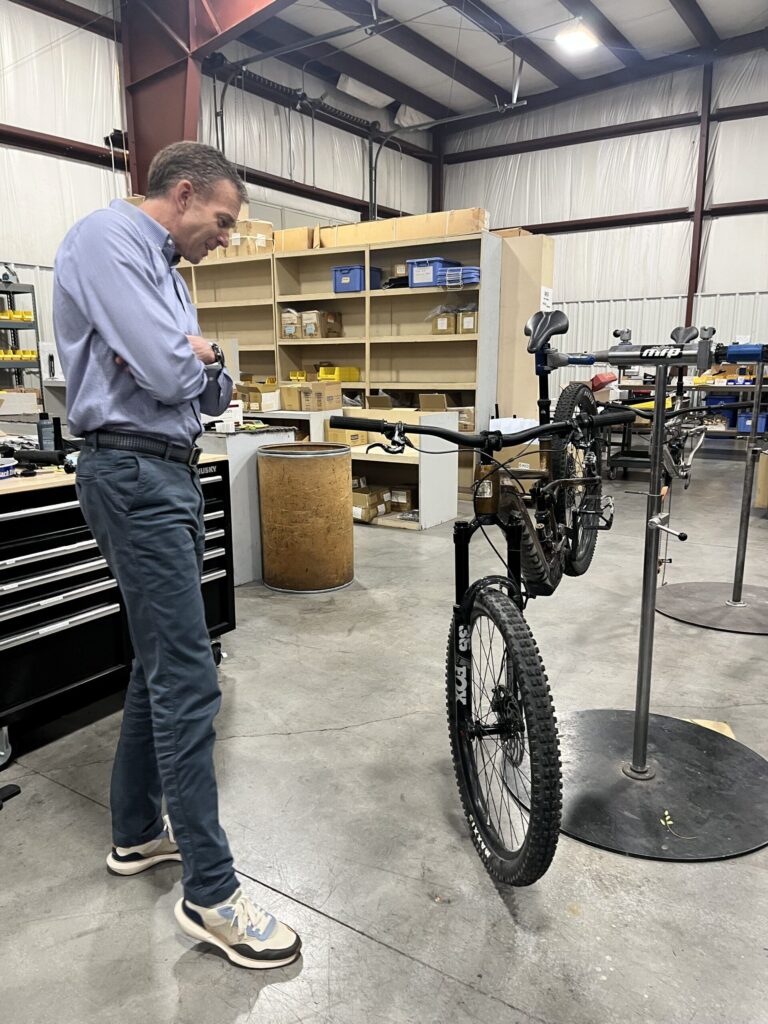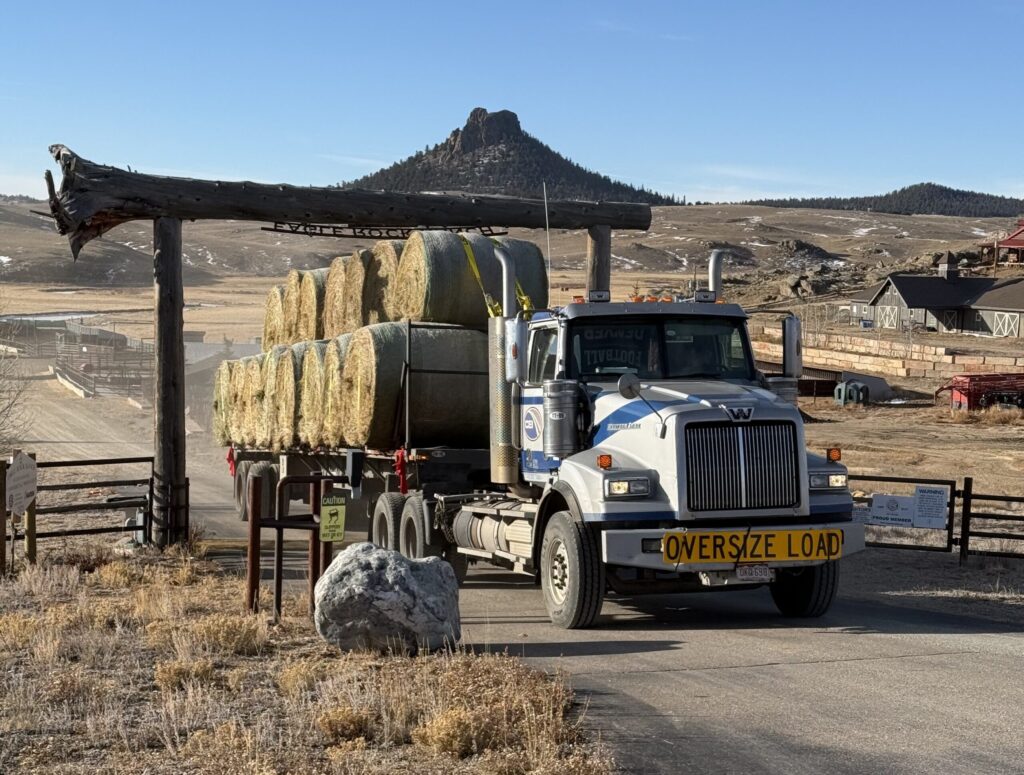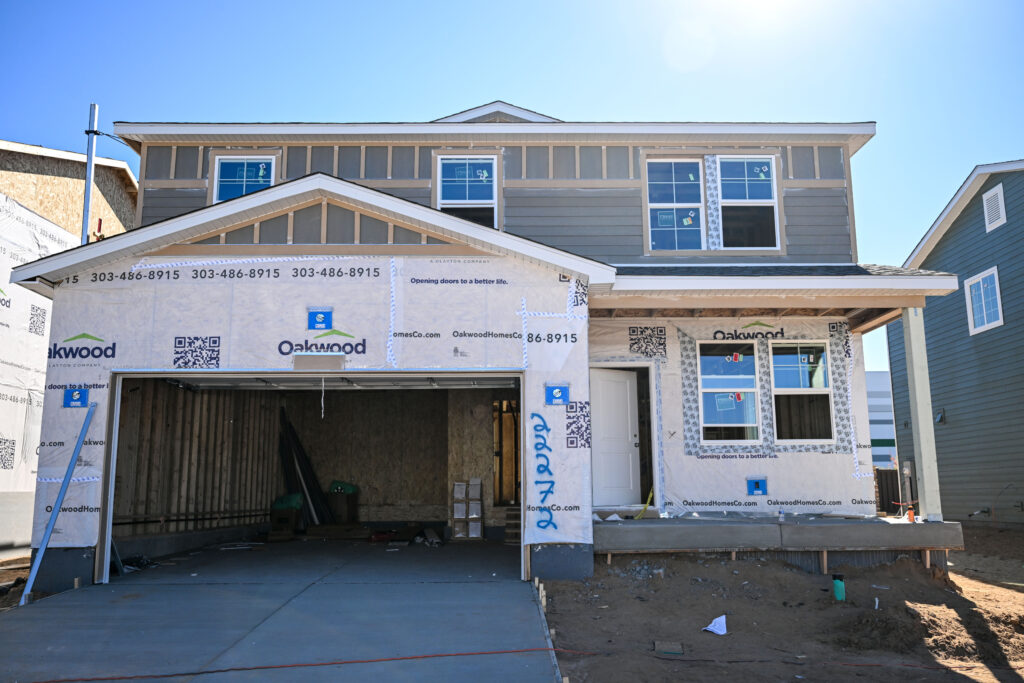Searching for the ‘missing middle’: Denver metro area cities scramble to meet housing needs

As Denver and other cities in the metro area race to comply with state mandates to change zoning and plan for more affordable housing, it remains to be seen if their varied approaches will succeed.
Laws enacted in 2024 require cities with populations over 5,000 to draft a housing action plan and limit how much parking can be required for housing developments.
Another 2024 law requires cities to allow accessory dwelling units (ADUs), such as “granny flats,” to be built wherever single-family homes are allowed.
Those steps are necessary, officials said, because Colorado has a shortage of housing considered affordable. That includes housing for residents who make between 51% and 80% of the area median income, as well as the “missing middle” — families that don’t qualify as low-income but don’t earn enough to obtain a mortgage on a single-family home.
Fueling some of these policy changes is the idea of “density,” embraced by many state and local officials as some sort of panacea to housing, homelessness and transportation woes. It’s an idea that has permeated policymaking at the state Capitol, where lawmakers are pushing for, among other policies, housing clusters close to transit.
Critics are skeptical about “density” as a cure-all. Meanwhile, several municipalities have balked at the state interjecting itself into housing and zoning issues, saying cities know their communities best, not to mention these kinds of state interventions violate “home rule.”
State policymakers, on the other hand, have argued that a more comprehensive approach — and a nudge in the right direction — would spur housing development.
window.addEventListener(“message”,function(a){if(void 0!==a.data[“datawrapper-height”]){var e=document.querySelectorAll(“iframe”);for(var t in a.data[“datawrapper-height”])for(var r,i=0;r=e[i];i++)if(r.contentWindow===a.source){var d=a.data[“datawrapper-height”][t]+”px”;r.style.height=d}}});The average monthly mortgage payment in the Denver metro area rose 134% from September 2015 to September 2025 — from $1,215 to $2,838, according to Zillow’s estimated mortgage tracking data.
The median sales price of a single-family home in the Denver metro area stood at $618,342 in September, compared to $493,500 in September 2020 and $415,000 in September 2018, according to the Denver Metro Association of Realtors.
The campaign to allow duplexes, townhomes, condos and other types of multifamily housing in single-family home neighborhoods has faced pushback from residents in cities like Lakewood, which are changing their zoning code.
In Littleton, residents responded by placing a measure on the Nov. 4 ballot so voters can decide whether to “preserve single-family residential land use.”
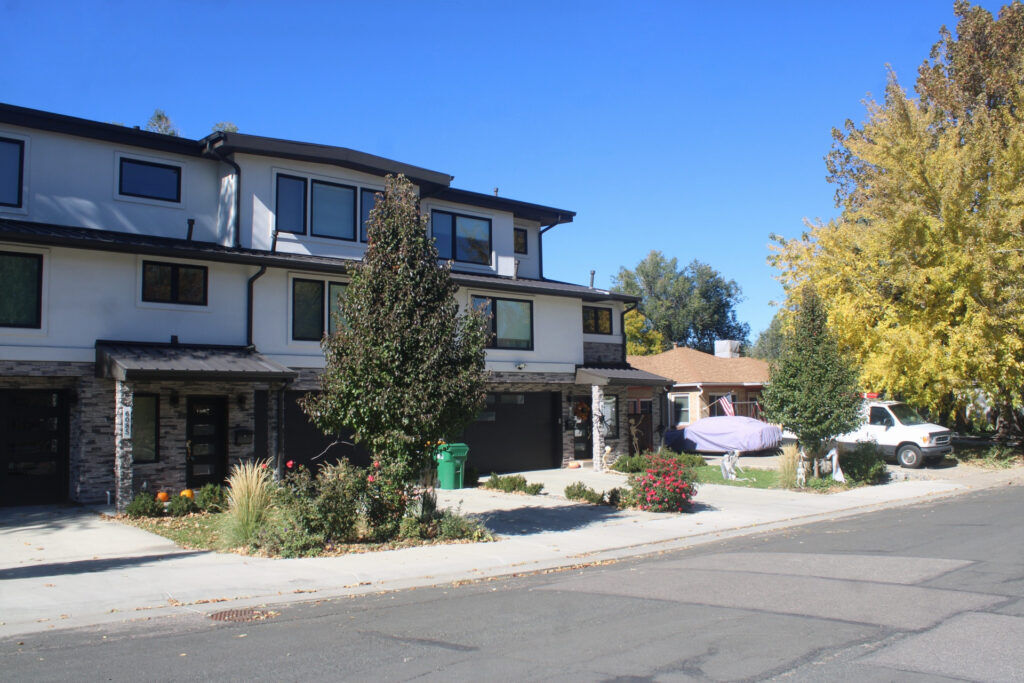
Some cities, like Denver, have already taken aggressive action by eliminating parking requirements, allowing ADUs to be built on all single-family home properties, requiring developers to set aside a portion of new housing for low-income residents, and fast-tracking permit applications.
Others — Greenwood Village, Arvada, Aurora, Glendale, Lafayette and Westminster — have filed a lawsuit against the state, arguing that the mandates are a violation of home rule protections.
No matter what the state requires or cities do, it is ultimately up to developers to decide what and where to build. Developers want profit, and they are driven by market demand, cost factors like the price of land and materials, and access to water and electricity.
STATE REQUIRES MUNICIPALITIES TO CREATE HOUSING ACTION PLANS
Senate Bill 24-174 requires cities with a population of 5,000 or more to create a housing action plan by Jan. 1, 2028, and every six years after.
The state is providing $15 million in technical assistance grants to help with the action plans and assessments. State housing grants after 2027 will prioritize local governments that have completed assessments and created action plans.
State Sen. Barbara Kirkmeyer, a sponsor of the bill, said the idea is to allow local governments to address their own specific needs.
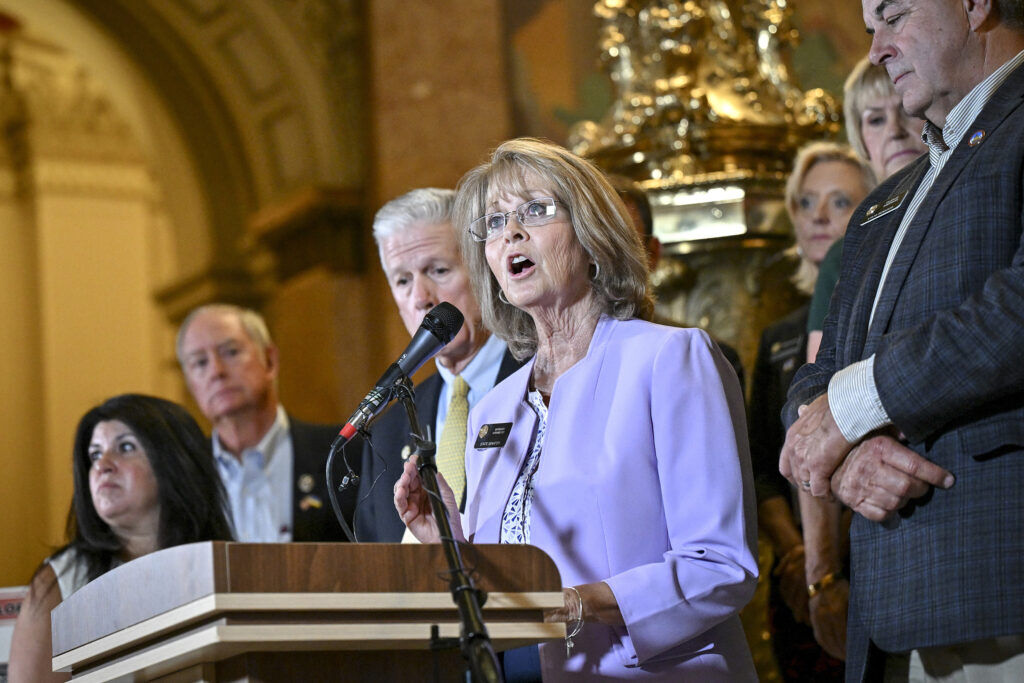
“People who live in the community should get to determine the characteristics of the community. Affordability is different in every community. It’s even different from Boulder County to Weld County,” she said.
House Bill 24-1304 limits how much parking cities and counties can require in new housing developments located near public transit.
The goal is to make housing more affordable and use land more efficiently by not forcing builders to add unnecessary parking, officials said.
Local governments can still set limits on how much parking is allowed, require bike spots, and make sure there’s accessible parking, but they can’t automatically require a parking lot.
“In some places, we’ve required that if you want to build any housing, you also have to build storage for cars off the street. That is a lot of space. It makes for some oversized parking lots that are empty even at their peak-use time,” state Rep. Stephanie Vigil, a sponsor of the bill, said. “In these places, we are accommodating cars more than we’re accommodating people.”
House Bill 24-1152 requires ADUs to be allowed wherever single-family homes are allowed, creating more affordable homes like granny flats.
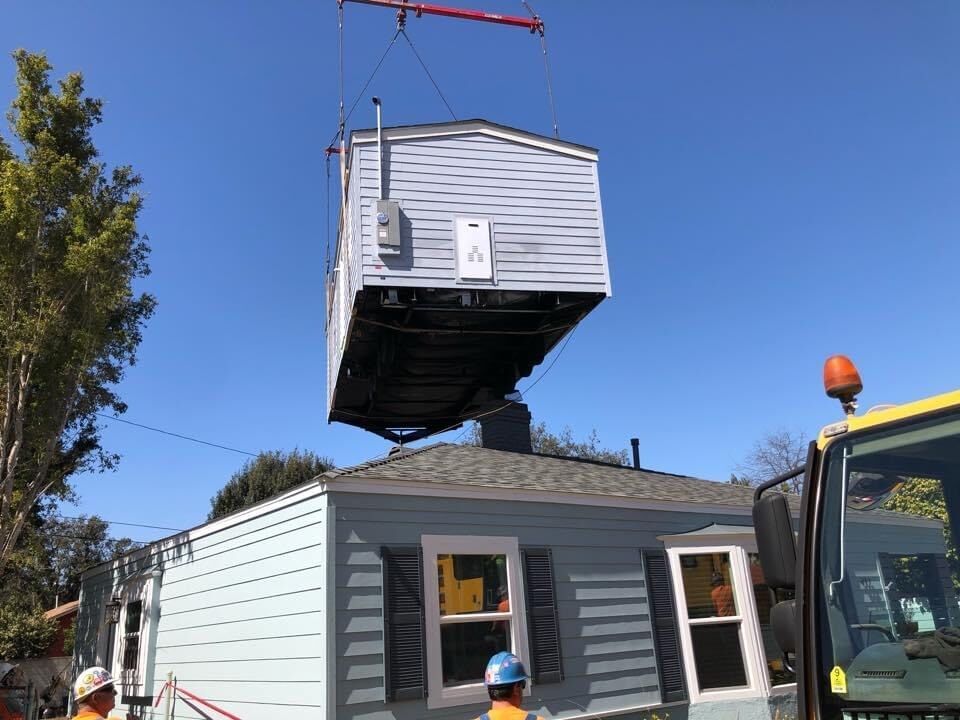
“It doesn’t force my mom and dad to go to a nursing home when they can live with me in my backyard,” said state Rep. Ron Weinberg, a sponsor of the bill.
COST OF NEW HOUSING IS ‘SO HIGH’
Colorado is the sixth least affordable state in the country when it comes to housing for low-income residents, according to a 2023 report by the National Low Income Housing Coalition.
The report found that 61% of low-income renters (those who make between 51% and 80% of the area median income) in Colorado have a “severe cost burden” when it comes to finding housing.
“(Affordable housing) is a North American problem, but with the amount of growth that Colorado has had in the amount of time that we’ve had it, it just compounds the issue,” Vigil, the state lawmaker, told The Denver Gazette. “We’ve really just shot ourselves in the foot in this country for not building enough to keep up with the demand.”
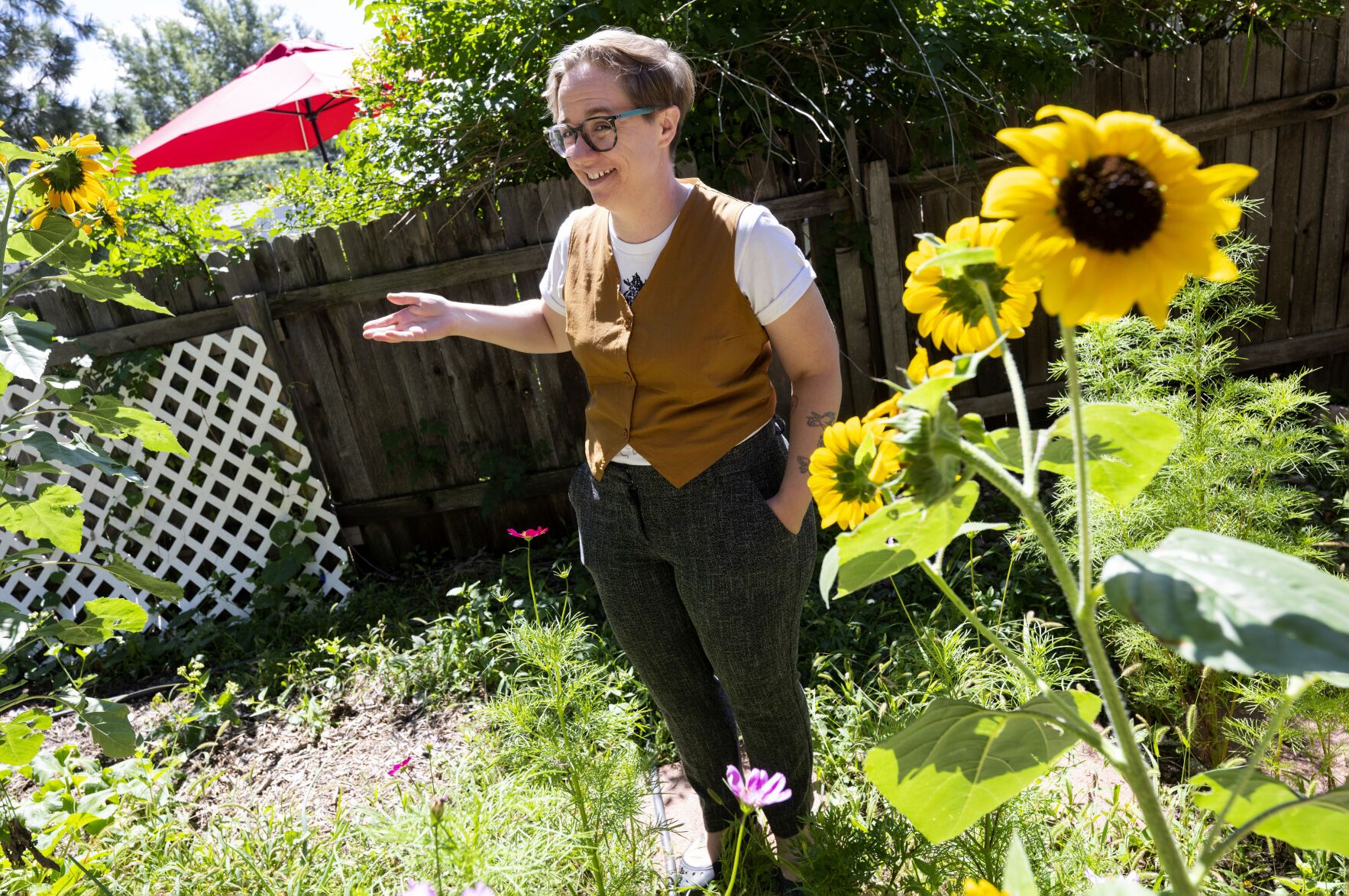
More must be done to provide affordable housing, officials said, but the types and extent of those moves are up for debate.
“I would say that there probably is not enough obtainable housing in the state,” Kirkmeyer said. “But affordability depends on a lot of things. There are so many issues that come into play when you’re trying to create more housing in communities. Is there water available? Is there sewer capacity? Is the infrastructure in place?”
Amid new laws and efforts to spur development of housing for the “missing middle,” challenges remain, many said.
Arvada City Councilmember John Marriott, who has long been involved with Jefferson County real estate, said that meaningful townhomes or similar “missing middle” housing have not been built in over a decade.
“Our tap fees are highly expensive. The timeframe it takes to make things happen are absurd. It’s the building codes that we have adopted. These really stringent state energy codes and electrical codes. All of these things contribute to another increment of housing being more expensive,” he said.
Increases in development costs make new homes more expensive, and that also raises the price of older homes.
“The reason we don’t have $300,000 used houses like we used to is because the cost of the new ones is so high,” Marriott said.
Aurora City Manager Jason Batchelor said the price of homes in the Denver metro area will continue to be high, even if more supply is created, because of price factors.

“The supply is there. So, on the theory of ‘just increase supply’ and people would buy it, there are a lot of other factors like high mortgage rates, tariffs on Canadian lumber, that aren’t helping,” Batchelor said.
Vigil said some solutions to the state’s affordable housing shortfall do not require big developments by national homebuilders.
“There is still a lot of work in terms of land baking and down payment assistance. There’s a lot to do to on adaptive reuse. We have some over-commercialized spaces that are just deserted, like bankrupt shopping malls. It’s land in the middle of town that’s available to use, but there’s just costs getting past those first couple of steps,” she said.
Arvada has allowed ADUs to be built on single-family properties since 2007 but its rules are more restrictive than the state requires.
“We were way ahead of it,” Marriott told The Denver Gazette.
Here’s how the state’s push for more affordable housing is playing out in Denver metro area cities:
ARVADA
In Arvada, someone can have an ADU in any residential zone as long as it meets requirements like being smaller than the main structure, following setback rules, and having the owner live in one of the units.
House Bill 24-1152 does not require some of the things that Arvada does, like needing the owner to live on the land and a single parking space for each unit, so Arvada has decided not to follow it.
“We’re in violation of the state law,” Marriott said. “Our council has directed our staff to not follow it. We would have to modify our code. In two workshops, we have said no. We think what we have is right for our community.”
Still, Arvada is “open for business” for more housing, he added, with the city providing incentives.
Arvada received $7.9 million in funding for private activity bonds from the state for 2025, with the intention to use the bonds to support private or public developers in building affordable housing projects.
AURORA

Aurora, which has an abundance of cheap land and relatively affordable housing as a result, has attracted a lot of housing development in recent years and city officials are confident it will continue.
The city is already creating housing for the “missing middle.” It has produced almost 23,000 housing units in the last seven years, with a nearly 50/50 split between multifamily and single-family units, according to Batchelor.
“We’ve been successful in developing lots of affordable housing over the years,” he said. “Aurora has a significant stock of naturally occurring affordable housing. Properties that are affordable even under the federal definition.”
One example is Green Valley Ranch, a neighborhood in northern Aurora near Denver International Airport developed by Oakwood Homes.
The master-planned community includes housing in the high $300,000s, well below the metro’s median single-family housing prices. One of the model homes is the Shire — a coach house with about 1,500 square feet, three bedrooms and two-and-a-half bathrooms.
These homes also feature private cul-de-sac parking, with three of the Shire homes sharing a paved driveway separating into the three garages, ultimately saving on land use.

“There aren’t a lot of being people doing this today from a builder-developer standpoint,” Ariel Kanobbe, spokesperson for Oakwood Homes, told The Denver Gazette regarding creating affordable housing for the “missing middle.”
Oakwood Homes has sold 40 of that specific type of home within the past year.
She added: “(Owning a home) has always been a part of the American dream and a part of what people strive for.”
While Aurora did have R-1 zoning, which only allowed single-family homes, the city is abiding by the bill that allows ADUs on all properties. Batchelor said the city will continue to work with builders to make sure zoning keeps up with demand.
Green Valley Ranch is working on duplexes to open later this year, for example.
Still, Batchelor — like Marriott in Arvada — does not believe allowing for different types of homes will actually lower the overall price of housing.
“Cost of labor continues to soar, tariffs impact materials, the price of housing continues to rise, developers continue to adjust,” he said.
Kanobbe added, “There are costs we don’t know what will be tomorrow regarding labor and materials.”
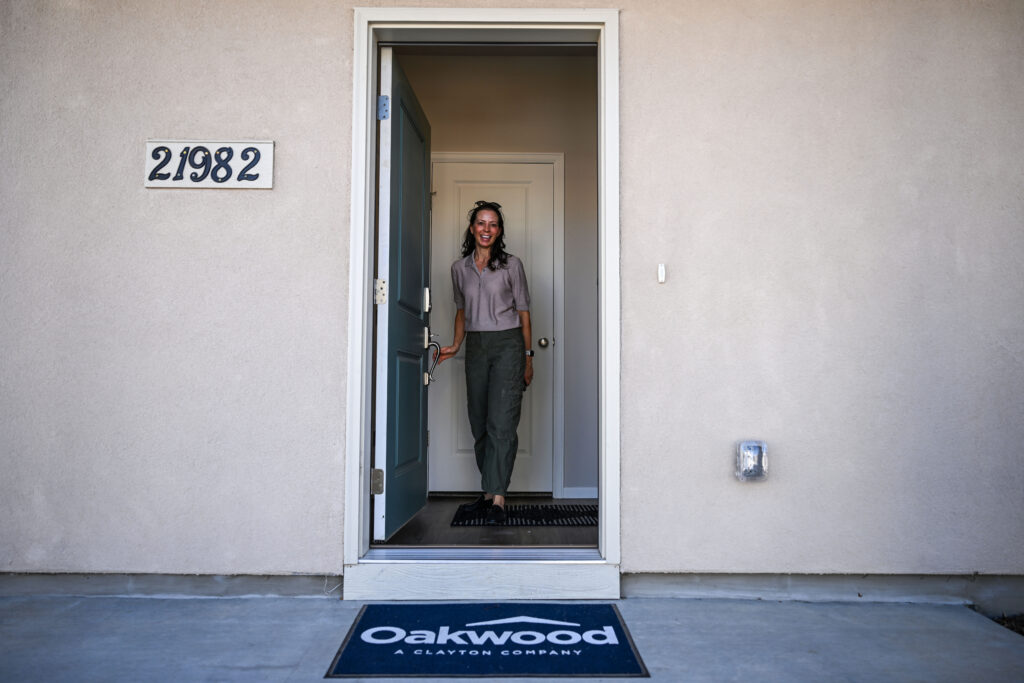
Though Aurora has cheaper land farther from the city center and Denver, Kanobbe said it doesn’t always equal more affordable housing.
“Land is absolutely a factor in the cost of a home,” she said. “Some things are less expensive and some things are more. You might need to track dirt or need utilities extended beyond where they are today. Not every builder can build everywhere.”
DOUGLAS COUNTY

Douglas County, with over 400,000 residents, continues to develop on land that is currently 51% open space.
The goal, some officials said, is to not only provide more housing but also amenities that draw people in, such as restaurants, entertainment and recreation.
The Lone Tree City Center development, on the east side of Interstate 25 between RidgeGate Parkway and Lincoln Avenue, is slated to attract 5,000 to 6,000 new residents.
The City Center, which does not yet have a developer, could include any type of housing if it’s the right fit, according to Lone Tree Director of Economic Development and Public Affairs Jeff Holwell.
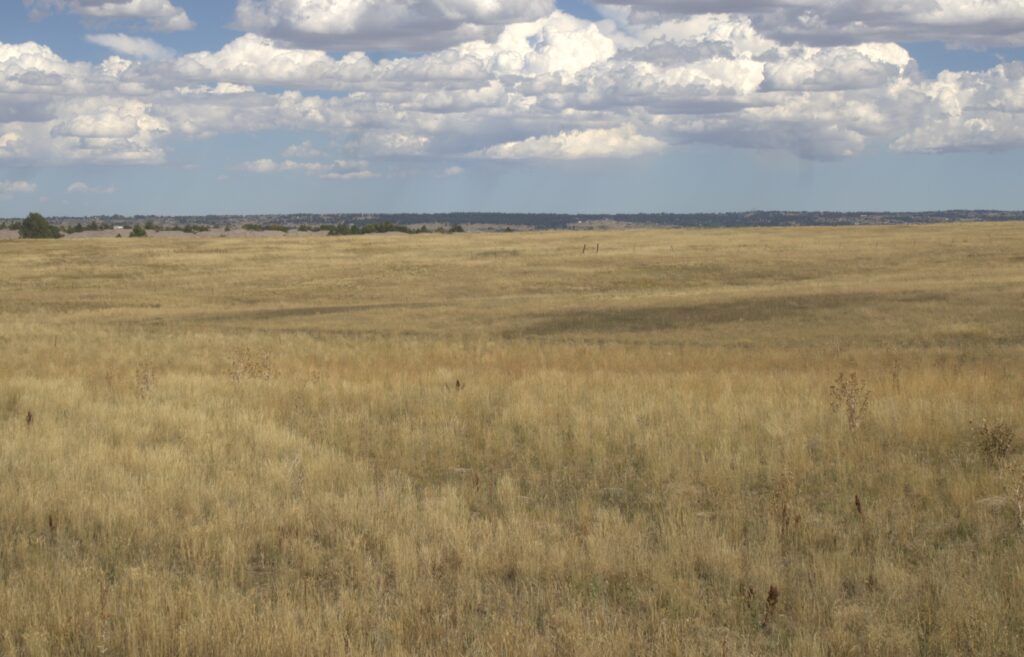
Cooper Thayer, of The Thayer Group and the Colorado Association of Realtors, said demand is a challenge for such a large development.
“For housing demand, things are a little bit slower now than they were a couple years ago, or a decade ago,” he said. “There will always be an underlying demand to live in the Denver metro area. That creates not an immunity, but a resistance to adverse market conditions.”
Coventry Development Corp. owns the land City Center sits on. Executive Vice President and Director of Development Keith Simon said a developer’s selling point depends on the “usual real estate fundamentals.”
That includes “location, access to transportation, access to workforce, and residential educational facilities for kids and families,” he said.
Castle Rock, meanwhile, anticipates growing to possibly 140,000 residents.

“We’re not shy of saying that we want to grow, we’re just saying that we want to grow the right way,” Castle Rock Economic Development Corp. President Frank Gray said.
“As far as housing is concerned,” he said, “we’re doing more than our fair share of housing, even though permits are down from what we were averaging. A lot of that has to do with interest rates in the market.”
Douglas County also has its share of unincorporated housing developments.
Sterling Ranch is Colorado’s largest master-planned community. With more than 2,500 homes already built, Sterling Ranch plans to grow to 12,050 homes over the next two decades, with more than 33,000 residents on its 3,500 acres.
Sterling Ranch Development Co. President Brock Smethills said housing development relies heavily on water supply, among other factors.

“Beyond kind of our area and county, Lone Tree, Parker and Castle Rock, there’s not a whole lot of land south of Castle Rock that can be developed, both due to the high reliance on groundwater, as well as the amount of conservation easement land south and west of Castle Rock,” Smethills said.
Colorado faces housing challenges, he added, because “land is expensive, water is more expensive. Entitlements are impossible. And right now, in the interest rate environment that we’re at, home builders are making almost no margin. They’re basically building houses for practice.”
LAKEWOOD
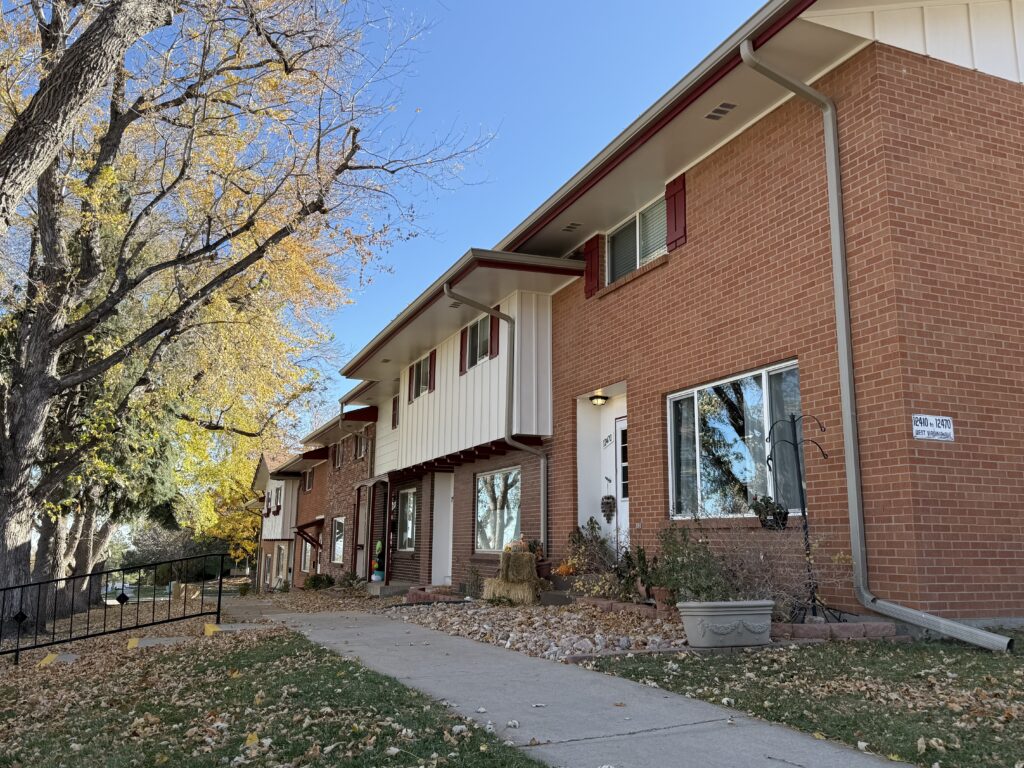
The Lakewood City Council recently passed the city’s biggest zoning code update since 2012.
On Sept. 22, the council approved an amended version of Article 3 of the city’s 2026 zoning code proposal — the highly touted article that erases the term “single-family zoning,” which does not appear in the document. Instead, the city will use the term “residential dwellings.” A residential dwelling could be a single-family home, duplex, triplex or townhome.
The new residential districts are broken up into “low-form” residential and “mid-form” residential classifications.
“Low-form” will include single-family homes and small-scale attached and detached housing to “support compact, walkable neighborhoods with a range of housing options,” according to the code.
“Mid-form” will include medium-density housing and multifamily buildings.

Though Lakewood has never had true single-family-home-only zoning — with all areas allowing some type of different usage like group homes or duplexes — residents are disturbed by potential changes to their neighborhoods.
The four meetings regarding the new zoning ordinances stretched into the early morning hours, with one meeting lasting nearly eight hours due to a plethora of public comments for and against the changes.
“Homeownership is out of reach for many buyers right now,” Lakewood Realtor Malisa Eakins said at a meeting. “Filling the missing middle through adding diversity through these additional housing types is critical.”
Some residents are still upset over the new zoning ordinances and have launched petition drives, but the entire zoning code proposal was officially approved on Oct. 13. It will go into effect next year.
“(Affordability) does not happen magically because some elected official or group has claimed that density equals affordability or walkability equals affordability or living close to transit equals affordability,” resident Donna Hopkins said at one of the meetings, adding that the only way to increase affordability is to increase income.
LITTLETON
In Littleton, a push for more density in single-family home neighborhoods has sparked controversy.
On Tuesday, Littleton voters will decide whether to alter the home rule city’s land restrictions to preserve historic neighborhoods that homeowners said define what the city is today.
To the surprise of Littleton residents, councilmembers in January considered an ordinance allowing duplexes, multiplexes, triplexes and ADUs within single-family zoned neighborhoods. Homeowners pushed back and the council indefinitely postponed the ordinance.
Littleton officials said the city needs 6,550 additional affordable housing units over the next couple of decades.
The city is trying to allow for the construction of multiplexes within areas zoned for single-family homes and it wants to ease requirements for ADUs. Housing types would include duplexes, small-lot residential complex units, three-to-four-unit townhomes, multiplexes and “cottage court communities,” officials said.
“The housing options that the city is considering, or was considering, are the kind of homes that young families are looking for when they want to move to a neighborhood where they could live in a smaller place,” Patrick Santana, a Littleton planning commissioner and member of the group Littleton Grows Together, previously told The Denver Gazette after the group Rooted in Littleton submitted Ballot Measure 3A.
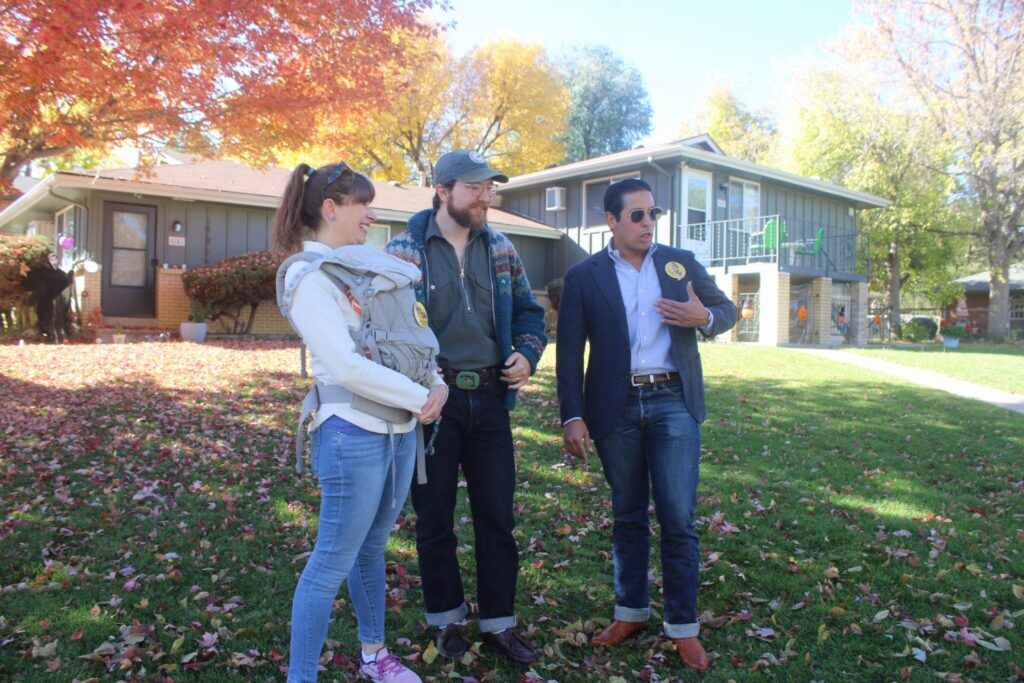
In a statement to The Denver Gazette, members of Vibrant Littleton, a group that opposes 3A, said the ballot measure silences “any conversation about how people may use their homes” through the current council process and the best way to make those decisions is “not by locking things into our city charter.”
“Whatever one may think about homes like duplexes near transit or backyard cottages, 3A puts an end to any discussions around what’s ‘good for’ our community by placing extreme restrictions in our city charter,” Vibrant Littleton members said.
Supporters of the ballot measure have argued the push for housing density would change the character of single-family home neighborhoods, diminish property values and undercut what homebuyers thought they were getting when they purchased their houses.
“We want an opportunity to vote on a massive change, like adding duplexes, triplexes and quadruplexes into every single-family neighborhood that exists in Littleton,” Mark Harris, of Rooted in Littleton, said.

His message to voters: “Think about your homes, think about your neighborhoods.”
Vibrant Littleton said in its statement that “passing 3A means pushing Littleton to become a more expensive place to find housing, making it even harder for working families, young people, and seniors to find homes that meet their needs and budgets.”
Harris said the measure provides time to “figure out a smart solution to density to the extent it exists.”
NORTHGLENN
Northglenn has long prided itself on being one of the most affordable places to live in the Denver metro area, according to city spokesperson Diana Wilson.
“This is not an accident. The city’s openness to ideas such as ADUs, multifamily housing, in-fill and density is evident in our support of projects like Karl’s Farm and Aspendale,” she said. “The city’s comprehensive plan outlines goals that include affordability, sustainability and equity in land use and housing.”
Karl’s Farm is advertised on its website as an affordable senior living complex with income limits of 60% of area median income. For one person, this is listed as $58,860.
Aspendale is also advertised as senior living. On its website, a 700-square foot, one-bed, one-bath apartment with utilities included costs up to $1,939.
Wilson added, “The city’s land use provisions reflect Northglenn-specific ways to address many of the concerns expressed by the state, but the state does not appear to appreciate that each community is different. Northglenn will continue to work hard to engage our community in land-use decisions and respect their input.”
According to the most recent housing report, Northglenn will need more than 200,000 housing units by 2032 to keep up with growth. Of those, approximately 134,000 will need to be for those making 50% of area median income or below.
THORNTON
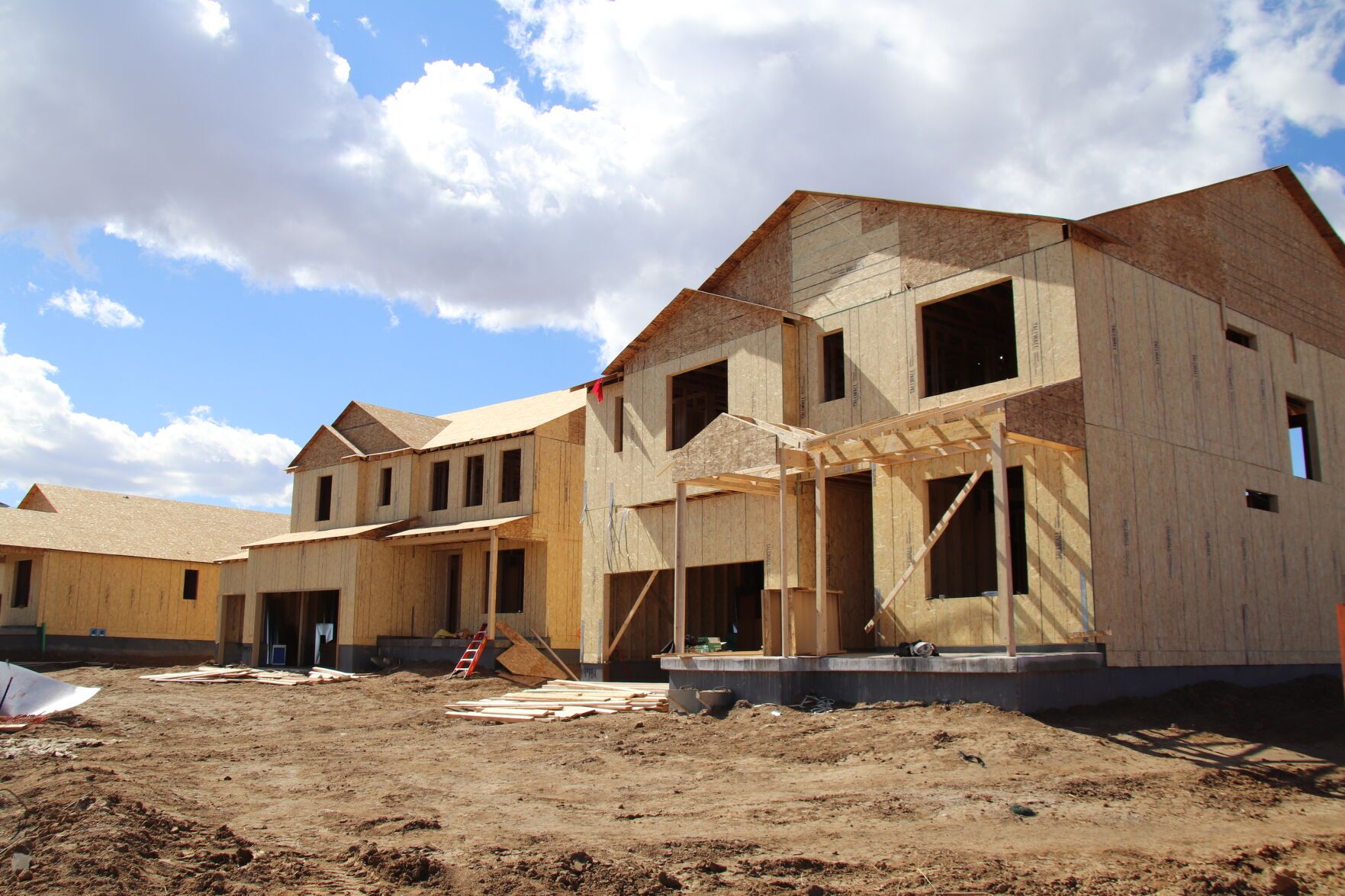
Thornton will need 11,500-12,000 new housing units to meet projected demand by 2032, according to the 2025 Regional Housing Needs Assessment by the Denver Regional Council of Governments.
Six out of every 10 homes built must be attainable to households earning less than 50% of the average median income, according to the city’s website. The number is not a construction requirement, but rather a planning goal, a city spokesperson said.
The city currently has 11 low- and moderate-income housing complexes and another 11 are listed as “at or below” fair market value, according to the assessment.
In early September, the city passed its first development code update since 1993. Changes were meant to encourage more mixed-use housing and multiple kinds of housing types, officials said.
Thornton recently hired a private contractor to analyze city code to address affordable housing and suggest ways to improve it.
WHEAT RIDGE
Wheat Ridge approved a 15-year city plan on Aug. 28 that encourages more affordable housing, but no significant changes have been made to the zoning code to accomplish that goal.
The plan notes that because a significant portion of the 32,000 residents in Wheat Ridge are younger families, more housing is needed for the “missing middle.”
Historic affordability has “eroded” due to rising rent prices not matching higher incomes, according to the plan.
In an effort to combat this, the city wilk prioritize modern housing development but do so in a way that maintains the city’s character, the plan said.
“While the community expressed ways in which they want the city to grow and evolve, there is not a strong desire for dramatic physical change to transform the city. At the same time, growth and development are both inevitable and necessary,” the plan said.
This would include creating developments that blend naturally with existing neighborhoods, improving infrastructure like bike paths and sidewalks and “incremental change that is carefully curated so we can evolve while maintaining our character of distinct areas with their own look and feel,” according to the plan.
Senior Planner Ella Stueve said the plan allows the city to evolve while “still feeling like Wheat Ridge.”
Denver Gazette reporters Kyla Pearce and Noah Festenstein contributed to this article.




